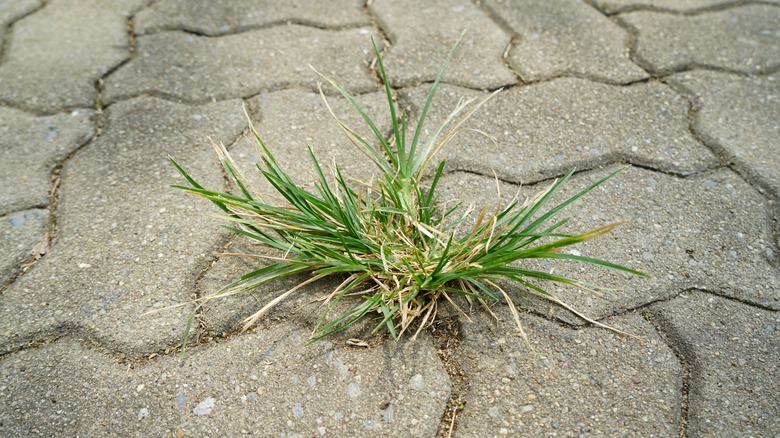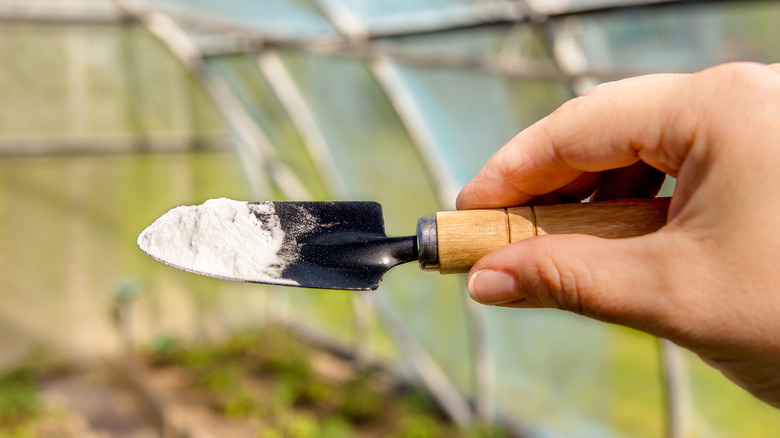The Affordable And Natural Solution To Stop Weeds From Growing In Cracks
If weeds sprouting through the cracks of your hardscape are driving you mad, you may be one step away from raiding your spice shelf for answers. And right next to the cinnamon and cumin sits one of the internet's favorite so-called natural weed killers: baking soda. Baking soda works because it contains salt, and salt messes with a plant's ability to hold onto water. This popular baking soda hack works by pulling moisture out of the plant tissue once it's applied to the leaves.
That loss of water stresses the plant, dries out its tissue, and may eventually cause the leaves to brown or shrivel. In smaller weeds, this dehydration can slow growth or even kill off the foliage entirely. But it's not a magic powder. Baking soda doesn't sink into the roots, which is why it works best on shallow-rooted weeds. In some cases, baking soda kills crabgrass, chickweed, and dandelions growing in cracks by drying out their surface, but anything deeper, like ivy, bindweed, or thistle, will probably shrug it off and come back swinging.
However, some gardeners find success with repeated applications, especially during dry, sunny weather when the dehydrating effect is stronger. But because it's non-selective, it can affect surrounding plants too, so it's best used with caution and in targeted areas only. The cracks of your walkway, driveway, or other hardscape areas are the perfect places to give this a try since you are less likely to impact the soil or other plants.
Using baking soda safely to manage weeds in cracks
One of the easiest ways to use baking soda is to sprinkle it directly from the packaging onto the weeds growing in cracks. Just dampen the leaves first so the powder sticks, then dust about a teaspoon over the foliage and base. Leave it undisturbed for a day or two, and let the sodium do its thing. But, if you're tackling a bigger patch or want more coverage, you can mix 1 tablespoon of baking soda into a quart of water and pour it into a spray bottle. Shake it well and spritz it right onto the weed's leaves.
Some gardeners also like to mix things up by combining baking soda with vinegar to kill weeds. You can sprinkle the dry powder first, then follow with a spray of household vinegar to boost the drying effect. You might even see bubbling, which is a sign it's reacting and breaking down the plant's outer layer.
Baking soda can work, especially for shallow weeds between cracks, but one round probably won't cut it. You'll likely need to reapply weekly to keep growth down. While this method can be effective in the right situation, it may not be the best match for every yard or every weed. Over time, repeated use of baking soda may change the soil's salt balance, so you will have to be extra cautious. Lingering salt can interfere with growth of healthy plants nearby.

